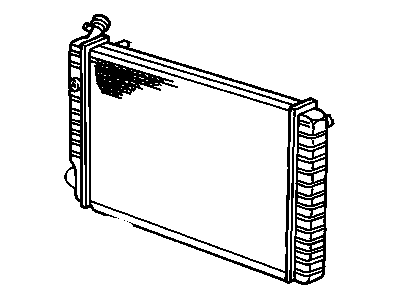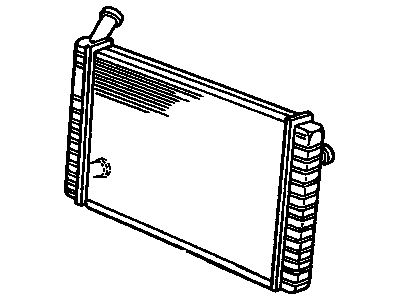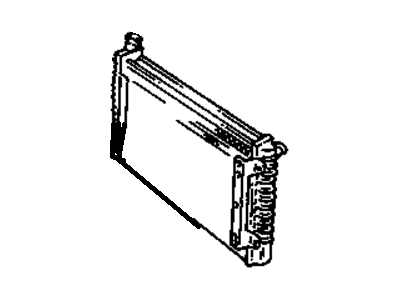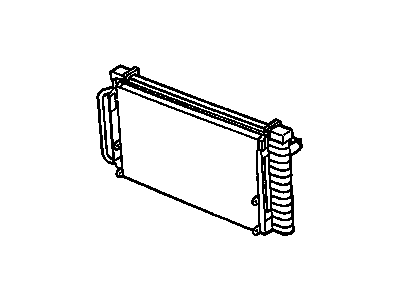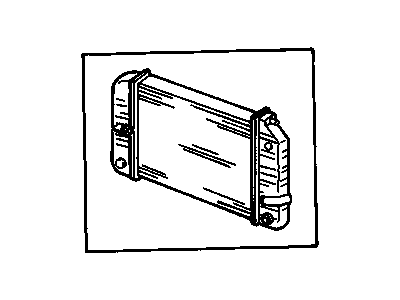
My Garage
My Account
Cart
Genuine Chevrolet Beretta Radiator
Cooling Radiator- Select Vehicle by Model
- Select Vehicle by VIN
Select Vehicle by Model
orMake
Model
Year
Select Vehicle by VIN
For the most accurate results, select vehicle by your VIN (Vehicle Identification Number).
10 Radiators found
Chevrolet Beretta Radiator
In Chevrolet Beretta vehicles, the radiator is used in the vehicle cooling system and has the major responsibility of spreading heat within the engine coolant. This is used like a heat exchanger to transfer heat from the coolant that flows inside its tubes to the air that flows over the thin Fins. Conventionally Chevrolet Beretta radiators have an aluminum core with plastic tanks and may also have aluminum tanks at times, however bronze / copper can be used. Over the years, modifications have been done to this type of radiator known as performance radiators which are made from lightweight aluminum with welded tanks offering better endurance as well as heat exchange properties. Some of these performance radiators are characterized by relatively larger tube diameter and a greater number of fins than standard models, which also enhances the rate of coolant flow and enhances on engine cooling. There are correct fitment as well as universal radiators for Chevrolet Beretta which makes it a versatile product that can be applied for modified automobiles as well as for racing cars.
Each OEM Chevrolet Beretta Radiator we offer is competitively priced and comes with the assurance of the manufacturer's warranty for the part. Furthermore, we guarantee the speedy delivery of your orders right to your doorstep. Our hassle-free return policy is also in place for your peace of mind.
Chevrolet Beretta Radiator Parts Questions & Experts Answers
- Q: How to disconnect the battery and remove the radiator on Chevrolet Beretta?A:Disconnect the negative battery cable from the battery, ensuring that on models with the Delco Loc II audio system, the lockout feature is turned off before any procedure requiring battery disconnection. Drain the cooling system, saving and reusing coolant if it is relatively new or in good condition. Remove the air cleaner assembly, and if the vehicle has an automatic transaxle, disconnect the cooler lines from the radiator using a drip pan to catch any spilled fluid. Remove the engine cooling fan assembly, loosen the hose clamps, and detach the radiator hoses from the fittings, twisting them if they are stuck to avoid distorting the radiator fittings; replace old or deteriorated hoses as necessary. Disconnect the reservoir hose from the radiator, plug the lines and fittings, and remove the radiator mounting bolts at each upper corner. Remove the four bolts connecting the air conditioner condenser to the radiator, then carefully lift out the radiator, taking care not to spill coolant or scratch the paint. Inspect the removed radiator for leaks and damage, and if repairs are needed, have them performed by a radiator shop or dealer service department due to the special techniques required. Clean bugs and dirt from the radiator using compressed air and a soft brush without bending the cooling fins, and check the radiator mounts for deterioration, ensuring they are clear before reinstalling the radiator. Installation follows the reverse order of removal, after which fill the cooling system with the proper mixture of antifreeze and water. Start the engine to check for leaks, allowing it to reach normal operating temperature indicated by the upper radiator hose becoming hot, and recheck the coolant level, adding more if necessary. For vehicles with an automatic transaxle, check and add fluid as needed.

